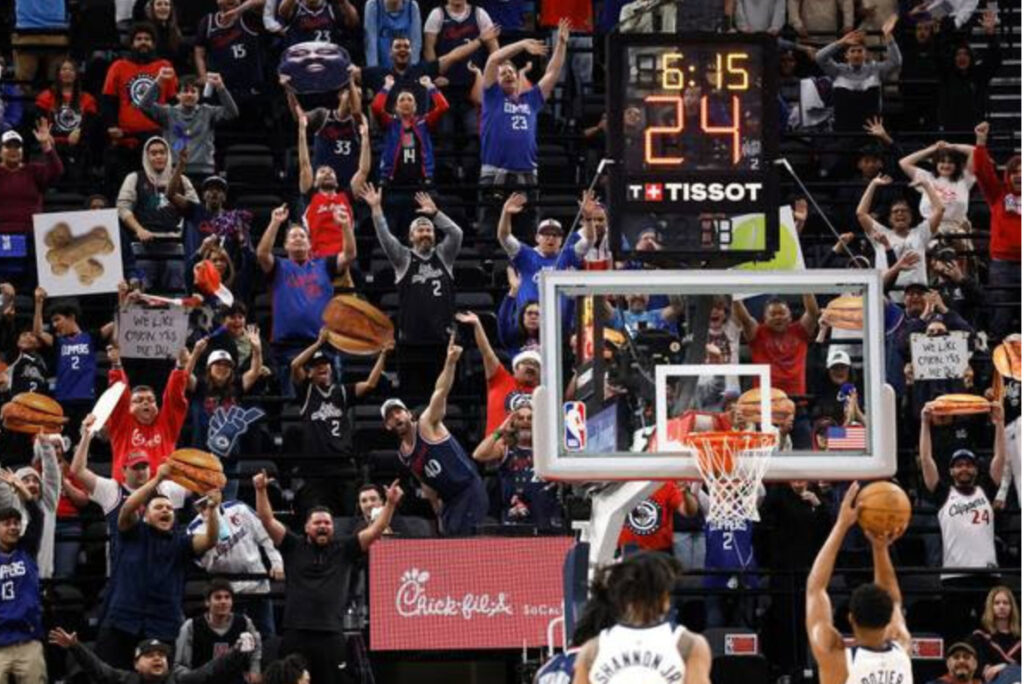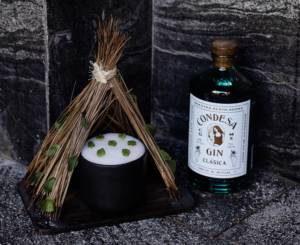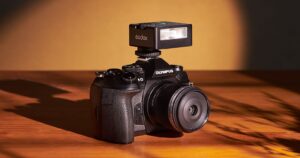In the NBA, home-court advantage is sacred. It’s why crowds roar louder in May. Why courtside celebrities become tactical distractions. Why teams fight all regular season for seeding. And yet, few home courts have managed to weaponize their environment as aggressively—and as effectively—as the Los Angeles Clippers’ new fortress, the Intuit Dome.
Nestled in Inglewood and opened to fanfare in late 2024, the Intuit Dome is quickly redefining what a modern basketball arena can be. But beyond the sustainable architecture, LED innovations, and panoramic fan lounges lies its true signature weapon: The Wall.
This isn’t just branding. It’s basketball architecture designed to mess with your rhythm. And if early data is any indication, it’s working.
The Numbers Don’t Lie: Free Throws Are Falling Short
Let’s start with the stats.
During the 2024–25 regular season, opponents shooting free throws at the Intuit Dome managed just 74.8% from the line—second-worst in the entire NBA across all arenas. But when specifically shooting toward The Wall, the number dipped even lower: 73.4%, according to a report from Sportico.
To put that in perspective: the league average hovered around 78.1%. That 4.7% drop may not sound seismic, but in the margins of a tight playoff game, it’s a chasm. A couple missed free throws in the fourth quarter? That’s the difference between moving on or going home.
In fact, only one home arena in the last 25 years has caused more disruption at the stripe: the 2013–14 Oklahoma City Thunder, whose fans (and Kevin Durant drama) helped visitors shoot just 69.8% from the foul line—a full 5.8% below league average.
The Intuit Dome isn’t quite at that level of psychological warfare. But it’s getting close—and it’s by design.
The Wall: A New Era in Fan Impact
Behind one of the hoops at the Intuit Dome, rising like the side of a mountain, sits a 51-row-high fan section called The Wall. There are no suites here. No food trays. No tech execs checking Slack on their phones. This section is for Clippers diehards only—and they’re not just encouraged to stand the entire game, they’re expected to.
The result is a vertical force of noise, movement, and intimidation that hovers directly behind the free-throw shooter.
Unlike the bowl-style seating in most NBA arenas, The Wall’s steep gradient creates an optical effect that collapses space. To a shooter standing 15 feet from the rim, the sea of fans feels like it’s closing in. Add in synchronized movement, chants, and the sheer volume of it all, and what used to be a “free” throw starts to feel more like a test of mental stability.
Clippers owner Steve Ballmer, the high-energy, former Microsoft CEO known for his all-in approach to fandom, envisioned The Wall as the NBA’s version of a European football-style supporters’ section—passionate, standing, and absolutely relentless.
“This is about energy,” Ballmer said during the arena’s opening. “We want our fans to have impact. This isn’t just about watching a game—it’s about being part of it.”
Mental Warfare at 15 Feet
Shooting free throws on the road has always been tough. But what The Wall does is amplify that tension by collapsing the shooter’s field of comfort.
Multiple NBA players have commented anonymously about how different the backdrop feels at the Intuit Dome. One Western Conference guard reportedly told a beat writer, “It’s like shooting into a wall of humans. You can feel them watching you harder than usual.”
That speaks to the psychological geometry of the free throw. It’s not just muscle memory. It’s rhythm. Breathing. Visual focus. And anything that breaks that—be it noise, motion, or a freaky vertical mass of fans—is a legitimate weapon.
Even seasoned shooters aren’t immune. While stars like Steph Curry or Damian Lillard may be unfazed, role players and younger athletes have been visibly affected. Brick one in front of The Wall, and suddenly, that second shot feels twice as long.
Designing Disruption: The Arena as a Sixth Man
Most arenas are designed around revenue and hospitality. Ballmer’s Intuit Dome flips the script. Every architectural decision appears engineered around intensifying the basketball experience—not just for fans, but against opponents.
The Wall is just one element:
- 360-degree scoreboard halos allow fans to stay locked into action without ever looking away.
- No suites near the floor, which means louder, more engaged lower-bowl fans.
- Dedicated standing zones, where groups can generate coordinated chants and noise.
- Sound-focused engineering, ensuring maximum crowd amplification.
In many ways, the Intuit Dome feels like the first arena built for modern, media-age fandom, where the crowd isn’t just part of the backdrop—it’s part of the game plan.
Will This Matter in the Playoffs?
Absolutely.
As the Clippers head into the 2025 playoffs, they’re entering uncharted territory—not just as contenders, but as hosts of what may be the most difficult free-throw shooting environment in the league.
In a seven-game series, where each possession tightens and each point matters more, those missed free throws compound. Imagine a Game 6 with a two-point lead, one minute left, and your opponent clanks both in front of 51 rows of rabid fans. That’s not just momentum. That’s math.
In a Western Conference that features razor-thin margins—between Denver, Golden State, Phoenix, and the surging Spurs—the ability to extract even a few extra misses per game could be the Clippers’ hidden advantage.
Don’t be surprised if coaches start adjusting their rotations to minimize poor free-throw shooters playing into The Wall. Or if teams start running offense away from that end of the court late in games. The mere presence of The Wall is already in opponents’ heads.
The Ballmer Effect: Building More Than a Team
Steve Ballmer didn’t just want to build a new arena. He wanted to build an environment. A place where the Clippers could finally define themselves outside the shadow of their crosstown rivals.
For decades, the Lakers dominated L.A.—not just on the court, but in culture, lore, and identity. Ballmer’s bet is that a new kind of stadium energy, backed by a new kind of fan commitment, can rewrite that narrative.
And in many ways, he’s already succeeding. The Intuit Dome is unlike any arena in the league right now. The Wall is not a gimmick. It’s a functional strategy. And the early numbers suggest it’s doing exactly what Ballmer intended—tilting the court, even just slightly, in the Clippers’ favor.
The Future of Home-Court Advantage?
As the league takes notice, you can expect other teams to start reconsidering how they design their arenas—and how they engineer crowd impact.
Will we see more steep sections? Fan-only zones? Standing mandates? Perhaps. But more importantly, the Intuit Dome has reignited the conversation about what home court can mean in a sport increasingly dominated by data, parity, and neutralizing tactics.
Free throws were supposed to be the last unguarded act in basketball. But as The Wall shows, even that space can be contested—not by a defender’s hand, but by an entire arena’s presence.
Impression
For Clippers opponents, walking into the Intuit Dome now comes with a warning label. You’ll face Kawhi. You’ll face PG. You’ll face Ty Lue’s schemes.
But when you stand alone at the line, in silence, with 51 rows of red and blue staring you down?
That’s The Wall.
And you better make both.
Arena: Intuit Dome
Team: Los Angeles Clippers
Feature: The Wall – 51 rows of standing fans behind one hoop
2024–25 Opponent FT % at Intuit Dome: 74.8%
FT % Toward The Wall: 73.4%
League Average FT %: 78.1%
Architectural Impression: 4.7% drop vs league average—second-worst in NBA
Historical Comparison: Only 2013–14 Oklahoma City (69.8%) saw a larger impact
No comments yet.








